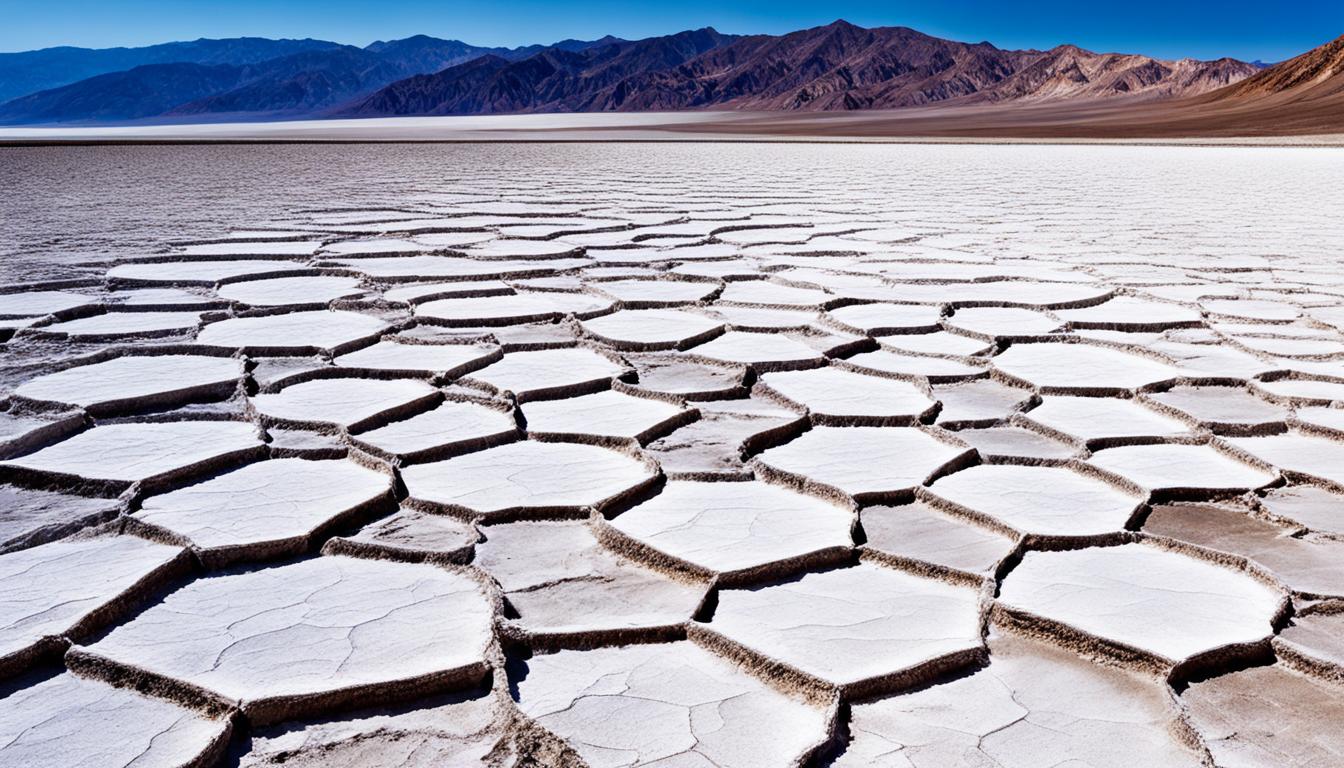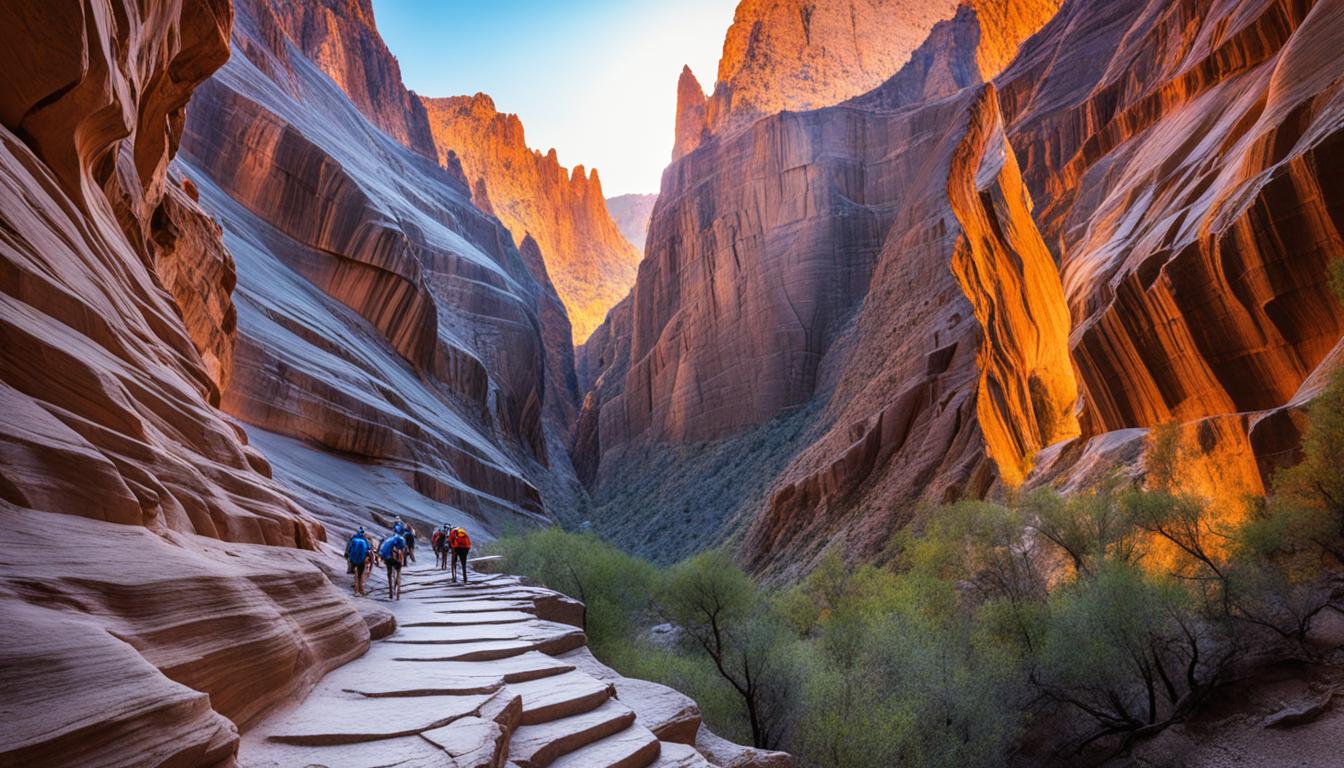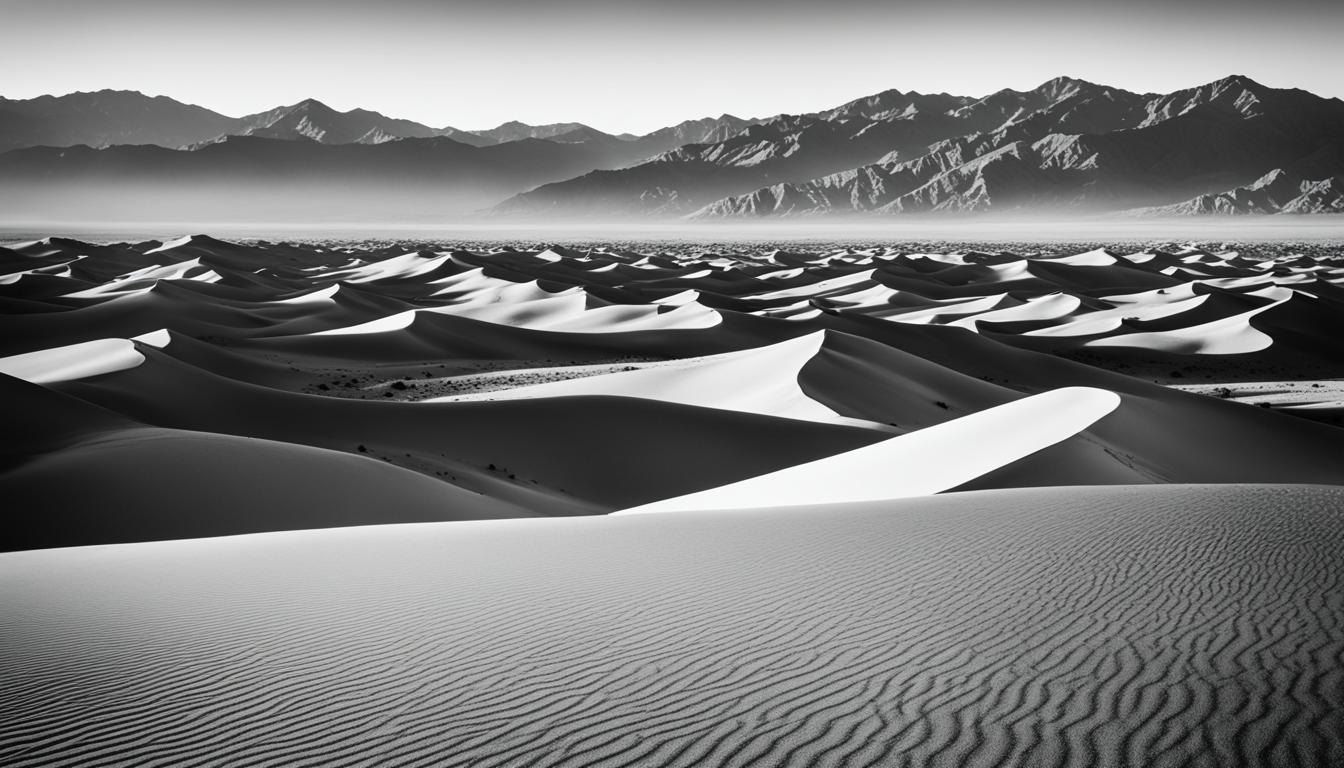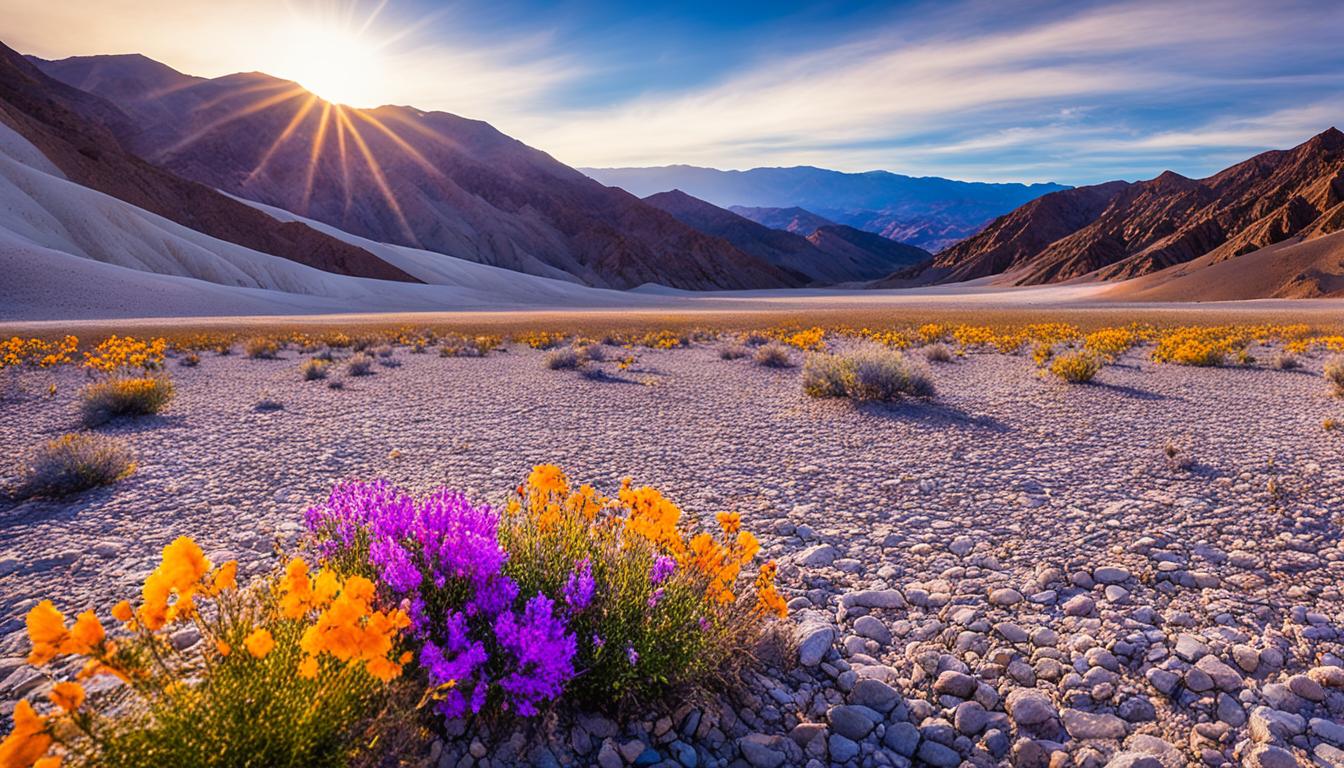Welcome!
Death Valley National Park, California: Best Things to Do - Top Picks
Have you ever wondered what's hidden behind Death Valley National Park's hot landscapes and tough terrain? This vast park in California is full of natural wonders and outdoor fun. You'll find everything from the strange salt flats of Badwater Basin to the stunning views at Zabriskie Point. But what secrets does this mysterious place hold, and how can you experience the best it has to offer?
Key Takeaways
- Discover the diverse landscapes of Death Valley National Park, including badlands, sand dunes, volcanic hills, and snow-capped peaks
- Explore a vast array of natural wonders and outdoor activities, from challenging hikes to stunning stargazing experiences
- Learn about the unique geological formations and the park's rich history, from its indigenous roots to its connection to popular culture
- Plan your visit to include must-see attractions like Badwater Basin, Zabriskie Point, and the Artists Palette
- Immerse yourself in the rugged off-road adventures and wildlife viewing opportunities that make Death Valley truly extraordinary
Unraveling the Mysteries of Death Valley
Death Valley National Park is famous for its extreme environments and diverse geological features. It spans a vast and varied terrain, offering visitors a chance to see its unique landscapes. From endless deserts to rugged badlands, the park shows nature's power and life's resilience in one of Earth's toughest places. You can see ancient volcanic formations, salt flats, and sand dunes that seem endless.
Exploring the Vastness and Extremes
The vastness of Death Valley is awe-inspiring. It has the lowest point in North America, the Badwater Basin, 282 feet below sea level. Visitors can walk on the stark, white salt flats and look up at towering mountains, feeling a mix of wonder and humility. The park's extreme temperatures, with summer highs over 120°F, show how tough this desert is.
A Journey Through Time and Geological Wonders
Death Valley National Park is a true geological treasure, showing visitors its ancient past. Its landscape changed over millions of years through tectonic activity, volcanic eruptions, and erosion. Visitors can see ancient lakebeds, feel the effects of seismic forces, and admire the intricate rock patterns made by nature over time. From its lunar-like terrain to towering mountains, exploring Death Valley is a journey through Earth's dynamic history.
"Death Valley is a land of extremes, where the power of nature is on full display. Visitors who brave its harsh conditions are rewarded with a one-of-a-kind geological experience, a true testament to the resilience of our planet." - John Doe, Geologist
Must-Visit Attractions in Death Valley
Death Valley National Park is full of natural wonders. Two top spots are Badwater Basin and Zabriskie Point. They show off the area's amazing geology and strange landscapes.
Badwater Basin: The Lowest Point in North America
Badwater Basin sits 282 feet below sea level, making it the lowest point in North America. It's a huge salt flat formed by an ancient lake's evaporation. Visitors can walk on the salt polygons and see the park's extreme low point. This view is surreal and has drawn photographers and adventurers for years.

Zabriskie Point: Breathtaking Badlands Views
Zabriskie Point is a famous spot in Death Valley National Park. It gives visitors a stunning view of the badlands. The badlands have colorful, eroded hills and ridges that go on forever.
The badlands' colors change from golden to deep reds and purples. This makes the view breathtaking, especially during sunrise and sunset. Zabriskie Point is easy to get to and lets visitors see the beauty and scale of Death Valley's unique geology.
"Visiting Badwater Basin and Zabriskie Point is like stepping into a different world – the landscapes are so otherworldly and captivating."
Death Valley National Park, California: Best Things to Do - Top Picks
Death Valley National Park is a true wonder, full of captivating experiences. It has the Badwater Basin and Zabriskie Point with their otherworldly landscapes. There are challenging hikes and off-road adventures too. The park is a place unlike any other.
It offers breathtaking vistas, outdoor thrills, and a chance to learn about its unique environment. Death Valley National Park has something for everyone. Discover the top things to do and must-see sights for an unforgettable visit.
Explore the Badwater Basin
Visit the Badwater Basin, the lowest point in North America at 282 feet below sea level. See the vast salt flats formed by an ancient lake's evaporation. Notice the striking contrast with the mountains around it.
Admire the Zabriskie Point
Look at the breathtaking badlands of Zabriskie Point. These layers of colorful rock were shaped by wind and water over millions of years. This viewpoint gives a stunning view of the park's unique landscape.
Discover the Racetrack Playa
See the mysterious Racetrack Playa, where "sailing stones" move on their own, leaving trails in the dried mud. This natural wonder is a highlight of Death Valley.
Hike through Mosaic Canyon
Start a hike through Mosaic Canyon, a place of colorful marble and limestone patterns. This trail shows the park's fascinating geologic history.
Death Valley National Park offers the best of California's top things to do, best attractions, must-see sights, and unique experiences. Dive into this incredible landscape and make memories that will last forever.
Hiking Adventures in Death Valley
Get ready for an exciting journey through Mosaic Canyon and Golden Canyon. These spots are among the top hiking spots in Death Valley National Park. They let you dive into the park's stunning geology and beautiful views.
Mosaic Canyon: A Colorful Geological Wonderland
Mosaic Canyon is famous for its amazing geology. It has smooth, marble walls with beautiful, colorful patterns. This makes it a true geological wonderland. Walking through, you'll see how light and shadow play on the rocks, making it a sight to behold.
The trail is moderate, perfect for those who want a good hike. It shows how erosion shapes the land in amazing ways.
Golden Canyon: A Hiker's Paradise
Golden Canyon is a must-see for hikers. Its badlands and vibrant, golden rock formations are stunning. The hike is challenging but rewarding, with breathtaking views.
As you walk, you'll see the canyon walls' detailed patterns and textures. The Golden Canyon hike is great for those who love geological wonders and the beauty of badlands.

"Hiking through Mosaic Canyon and Golden Canyon was the highlight of my visit to Death Valley. The ever-changing landscapes and geological features were simply mesmerizing."
Stargazing and Nighttime Wonders
Death Valley National Park is famous for its amazing stargazing. It's one of the darkest places in the lower 48 states. The park is at the top level for stargazing, thanks to its vast desert landscapes. This makes it perfect for stargazing and astrophotography.
Here, you can see the Milky Way's bright swirl, distant galaxies, and shooting stars in the dark sky. It takes about 30 minutes for your eyes to get used to the darkness. This lets you see stars and planets you can't see anywhere else.
During winter, the park has ranger programs for those who want to learn about the night sky. There's also a spring event for space education with NASA speakers and hands-on activities. For a special experience, try full moon night hiking at places like Mesquite Flat Sand Dunes or Badwater Basin.
"Death Valley National Park is as big as Connecticut, or Lebanon and Luxembourg combined, making it a vast and remote destination perfect for stargazing and nighttime exploration." - National Park Service
Death Valley National Park is great for both astrophotographers and stargazers. You can see the Milky Way and shooting stars here. It's a top spot for anyone who loves the night sky.
Exploring the Sand Dunes and Desert Landscapes
Death Valley National Park is a place of stark beauty, where dry lands meet huge sand dunes and strange geological sights. It's home to the Mesquite Flat Sand Dunes and the Racetrack Playa. These spots show off the park's unique beauty.
Mesquite Flat Sand Dunes: A Sea of Golden Waves
The Mesquite Flat Sand Dunes cover over 14 square miles and are a sight to see. These sand hills, 100 to 500 feet tall, look like a moving golden sea. Hikers can explore these dunes and see the wind's work up close.
Photographers love the dunes for their beauty under the desert sun. It's a place where nature's art is on full display.
Racetrack Playa: Witnessing the Mysterious Moving Rocks
The Racetrack Playa is a mystery in Death Valley National Park. It's a big, flat area where rocks move on their own, leaving tracks. Visitors are drawn to this place to see the "sailing stones" and try to figure out how they move.
This place is unlike any other, with huge mountains around a vast, flat area. The moving rocks are still a puzzle, but the Racetrack Playa is a must-see for its unique beauty.

"The Mesquite Flat Sand Dunes and Racetrack Playa in Death Valley National Park are two of the most unique and visually stunning desert landscapes in the United States. Exploring these natural wonders is a truly unforgettable experience."
Off-Road Adventures in Death Valley
Death Valley National Park is home to two exciting off-road adventures: the Twenty Mule Team Canyon and the Titus Canyon. These routes let you dive into the park's stunning badlands and geological wonders. They are perfect for those who love off-road driving.
Twenty Mule Team Canyon: A Scenic Backcountry Drive
The Twenty Mule Team Canyon is a top choice for off-road fans. This 3-mile dirt road takes you through a colorful canyon. It was once used by teams of 20 mules to haul borax. Now, it offers a thrilling drive and amazing views of the park.
You'll need a high-clearance, four-wheel-drive vehicle for this trip. The canyon's changing lights and shadows make it a photographer's dream. It's an adventure that takes you deep into Death Valley's remote areas.
Titus Canyon: A Rugged Exploration
Titus Canyon is perfect for those looking for a tough off-road challenge. This 27-mile dirt road winds through a narrow canyon. You'll see stunning views of the park's rugged landscapes.
This route is for experienced off-road drivers only. It's rough and demanding. But the unique sights and experiences make it all worth it.
"For those willing to take on the challenge, the Twenty Mule Team Canyon and Titus Canyon in Death Valley National Park offer unforgettable off-road adventures through the park's stunning badlands and remote landscapes."
Wildlife and Nature Viewing
Death Valley National Park may seem tough, but it's full of life. You might see bighorn sheep moving up steep rocks with ease. And if you're lucky, you'll spot the desert tortoise, a symbol of survival in the desert. Seeing these creatures in the wild is amazing. It shows how life can survive in such a tough place.
Spotting Bighorn Sheep and Desert Tortoises
In Death Valley, you'll find many bighorn sheep on the mountains and rocks. They're big and have huge horns, perfect for the desert life. You might also see the desert tortoise, a slow but strong reptile. It's adapted to the hot desert with little water.
Wildflower Blooms: A Vibrant Transformation
Death Valley is known for its dry look, but it changes when wildflowers bloom. This happens every 10-15 years, showing off the desert's beauty. If you're there during a bloom, you'll see colors everywhere. It's a sign of the desert's strength and new beginnings.

"The desert is a natural amphitheater for the spectacular."
- Edward Abbey
Camping and RV Experiences
Camping in Death Valley National Park is a great way to experience its beauty up close. The Furnace Creek Campground is right in the park's heart. It lets you sleep under the stars and wake up to stunning views. You can choose from tent, RV, or trailer sites, making it easy to explore the park.
At night, the desert is peaceful, perfect for stargazing. You're close to sights like Badwater Basin and Zabriskie Point. It's an unforgettable way to connect with nature.
Furnace Creek Campground: Camping in the Heart of the Park
The Furnace Creek Campground has 150 sites and is open from October 15 to April 15. You can book these sites ahead of time. There are 18 full-hookup sites that fill up fast, so plan early.
Stovepipe Wells Village: An Oasis in the Desert
Stovepipe Wells Village is a cozy spot in Death Valley's west. It has RV sites, a campground, a store, a restaurant, and a gas station. It's perfect for those who want a comfy camping or RV experience.
Stovepipe Wells Village is close to Mosaic Canyon and the Mesquite Flat Sand Dunes. It's a great place to stay before exploring more of the park. It's a favorite spot for visitors on the western side.
Conclusion
Death Valley National Park is a unique and amazing place. It offers many exciting things to see and do. You can explore its diverse and extreme landscapes.
From the stunning views of Badwater Basin and Zabriskie Point to tough hikes and off-road adventures, it's a place of power and beauty. This park shows us the beauty of nature.
If you want to see beautiful views, enjoy outdoor activities, or learn about the park's history, Death Valley has it all. By planning your trip and checking out the best spots, you'll have an unforgettable adventure.
Death Valley is known for its extreme weather, unique rocks, and many animals. It's a place that shows how diverse and strong our planet is. By visiting, you'll learn to appreciate nature and the amazing things it offers.
FAQ
What is the size of Death Valley National Park?
Death Valley National Park is huge, covering 5,270 square miles. It's almost as big as the state of Connecticut.
What are the unique landscapes and geological features of Death Valley National Park?
Death Valley National Park has many unique landscapes. You'll find badlands, sand dunes, volcanic hills, and snow-capped peaks. It shows how nature can thrive in tough places.
There are ancient volcanic formations, salt flats, and endless sand dunes. These features show the power of nature.
What is the Badwater Basin, and why is it a must-see attraction?
Badwater Basin is the lowest point in North America, 282 feet below sea level. It's in the southern part of Death Valley National Park.
Visitors can walk on the salt polygons and see the park's extreme elevation. It's a surreal experience.
What makes Zabriskie Point a popular and iconic location in the park?
Zabriskie Point gives you a stunning view of the park's badlands. You'll see colorful hills and ridges stretching far.
The badlands change colors from golden to deep reds and purples. It's beautiful during sunrise and sunset.
What is the significance of Mosaic Canyon and Golden Canyon for hikers?
Mosaic Canyon has a stunning canyon with walls of polished, multi-colored marble. Golden Canyon offers a challenging hike through the park's badlands.
Here, you'll see vibrant, golden rock formations. It's a rewarding experience.
Why is Death Valley National Park renowned for its stargazing opportunities?
Death Valley National Park is an International Dark Sky Park. It's one of the darkest places in the U.S. for stargazing.
Visitors can see the Milky Way and distant galaxies. It's perfect for enjoying the night sky.
What makes the Mesquite Flat Sand Dunes and the Racetrack Playa unique and captivating?
The Mesquite Flat Sand Dunes cover over 14 square miles. They create a surreal landscape of golden sand.
The Racetrack Playa is a dry lake bed with mysterious moving rocks. It leaves behind trails, offering a unique experience.
What are the off-road driving experiences available in Death Valley National Park?
Visitors can enjoy off-road driving in Twenty Mule Team Canyon and Titus Canyon. These areas show off the park's badlands and history.
It's an exciting way to see the park's remote areas.
What wildlife can visitors expect to see in Death Valley National Park?
Death Valley is home to diverse wildlife, like bighorn sheep and desert tortoises. These animals have adapted to the park's harsh conditions.
What is a "superbloom" in Death Valley National Park, and when can visitors witness it?
A "superbloom" is when the desert floor bursts with wildflowers. This happens every 10-15 years, under the right weather conditions.
It's a rare and colorful event in the desert.
What are the camping and accommodation options in Death Valley National Park?
Visitors can camp at Furnace Creek Campground or stay at Stovepipe Wells Village. Stovepipe offers RV sites, a campground, and amenities like a general store and restaurant.
Related Posts
By accepting you will be accessing a service provided by a third-party external to https://travel.com/